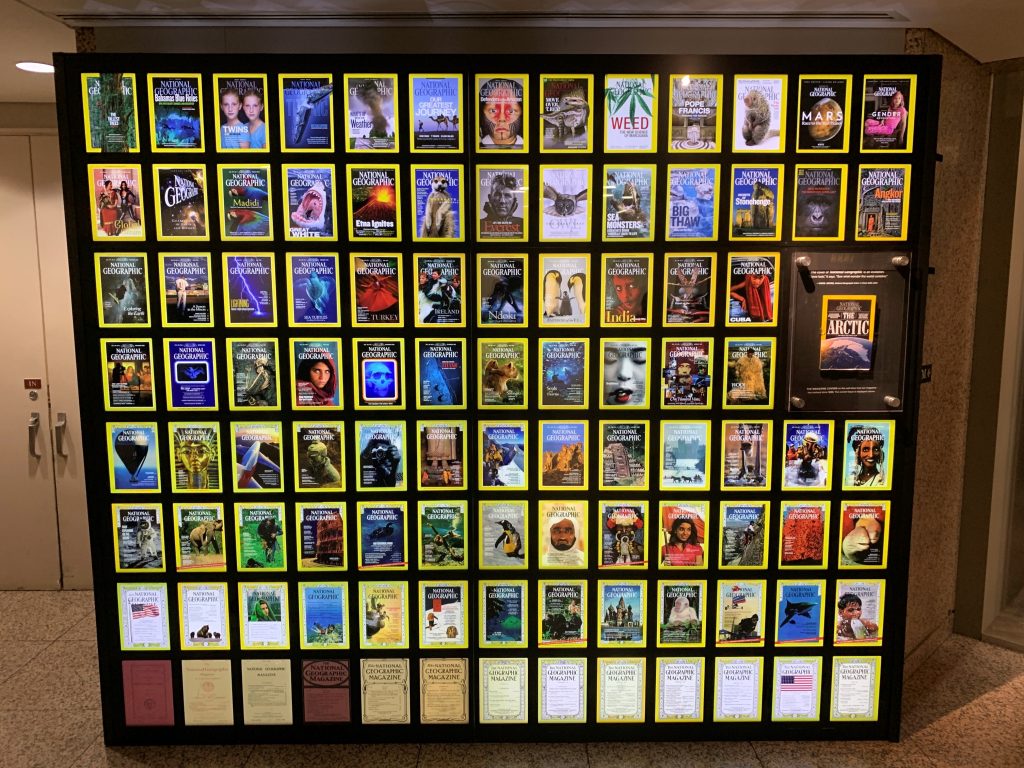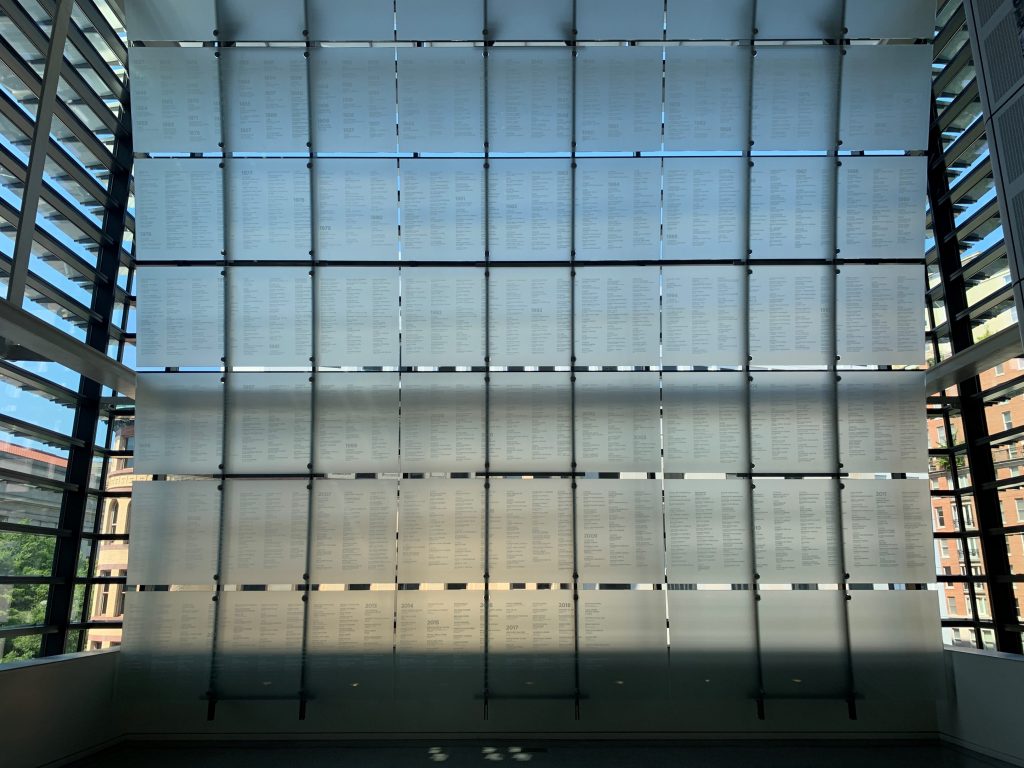Looking Beyond the Surface of News and Journalism: The Harshness of the Industry
By Ryan Wagner, September 16, 2019.

Photo Credit: Ryan Wagner
On September 4, 2019, an environmental journalism class from Gettysburg College embarked on a journey to Washington DC to further their knowledge of journalism and spark ideas for their own stories by exploring exhibits in the Newseum and speaking with National Geographic writer and editor Brian Howard.
The trip began with a drive, but in retrospect, it was more than a drive. It was an expedition for knowledge and understanding. On this trip the class’s goal was to learn how to identify tainted news and how they, as aspiring journalists, can do their part for providing people with news that is both interesting and truthful. With these learning goals in mind, the class was about to be exposed to far more than the beauty of journalism.
The Pulitzer Prize gallery was very visually striking, specifically due to the variety of the photos that had won the prize. After examining some of the photos and their backstories more closely, they provide a few crucial journalistic and real-life realizations. The first being that not all interesting or necessary news stories are enjoyable for the journalists, but the story must be written. Not only do journalist have to put themselves at risk for their stories and photos, but there are times when journalists witness and experience horrific disasters on a variety of mental and physical levels which can be very challenging in the present and future. When reading news, we as readers must recognize the disaster within the story and also understand the struggle the journalist went through to attain such a vivid story in a hostile environment.

PHOTO CREDIT: Ryan Wagner

Photo Credit: Ryan Wagner
Entering the Freedom of the Press exhibit, the most significant difficulty, on a global scale of journalism, is that all countries don’t have a press that is fully free, some being not free at all. This can not only put the journalist at risk for an arrest and in extreme cases, even death, similarly to the Pulitzer Prize and Journalist Memorial exhibits, but also prevent crucial information to understanding the entirety of stories coming in and out of those places, same restrictions that don’t allow information out for journalists also applies to all the information received by the people living within press restrictions.
At the Newseum. the class received a short instruction by volunteer educator Sarah Bhatia where she explained how to “E.S.C.A.P.E.” fake news. E.S.C.A.P.E. is a step by step process to “escape” fake news and know for certain the information presented in the news is credible. Sarah spoke about the potential harm that could come from fake news. Often times fake news stories and websites are primarily used for capital gain but can also be done to fool people as a joke or to influence people’s opinions.
The influencing of people’s opinions can be very dangerous to those people, but it can also impact much more than just an individual, it can impact a nation or even the world. When speaking on good and honest journalism, Brian Howard said that “journalism can be an avenue for change and spread information globally,” meaning the same can be true for poor journalism like fake news. Howard also spoke on how his own stories have impacted individuals positively, but again the same can be said for impacting individuals in a negative manner with news stories.
When visiting National Geographic, one of Brain’s points that was particularly important was when he said to try to “create new conversations” when writing stories. A concept that can be seen in the Pulitzer Prize photo journalism in the uniqueness and power that the photos possessed. Sometimes journalism challenges you to go to dangerous places and capture violent information but what can be captured has the potential to save lives and inspire.
The class was given free reign to explore the rest of the museum and its exhibits. Not all the exhibits generated the same intense feelings and thoughts that others did, three were much more striking than the others. The three exhibits that have a deeper undertone, something that gives rise to strong emotion, were the Pulitzer Prize Photographs gallery, the global Freedom of the Press exhibit and the Journalists Memorial.
The Journalist Memorial is an exhibit that exposes its visitors the potential dangers of journalism. Often times we as readers concern ourselves with authors credentials, not always realizing that there is a human being with a life and family. The glass dedication wall memorializing the often most forgotten component of journalism, the journalist themselves and preserving their eternal remembrance, .

Photo Credit: Ryan Wagner
This story was updated on 9/29/19. The primary changes include grammatical corrections, re-organization of information and photos, providing photo credit, increased specificity and brevity of information.